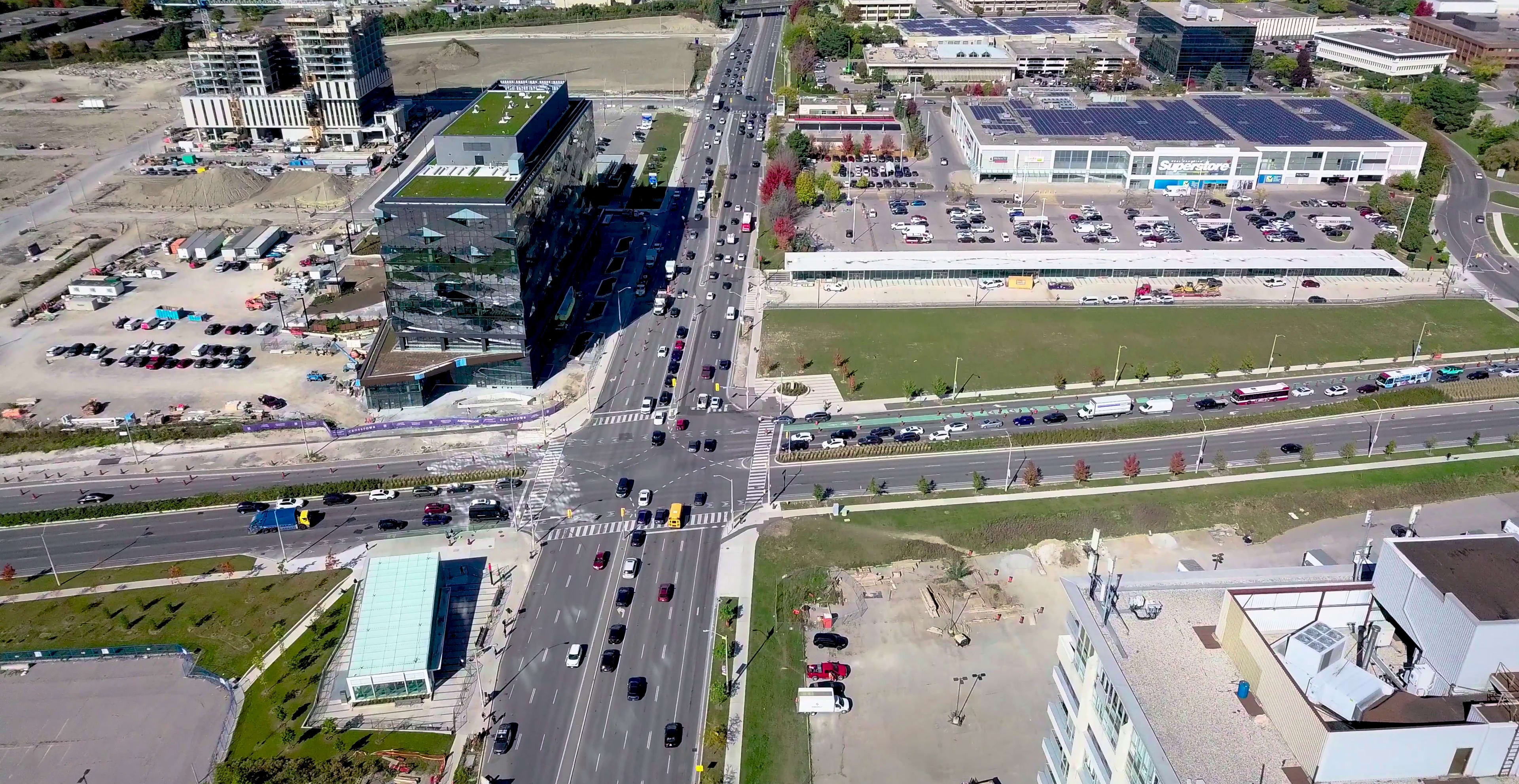Share
The Ontario Line will elevate Toronto’s transit network
Three kilometres of elevated tracks and three raised stations are coming to Toronto’s north end.
Jun 5, 2025
The future of transit in Toronto will move thousands of people faster and more comfortably than ever before, and while tunnelling is typically the default in many areas, elevated transit offers advantages in passenger experience.
This includes the Ontario Line subway, which will feature a mix of below- and above-ground sections. The 15.6-kilometre line will include almost three kilometres of elevated guideways — structures that look like bridges — and three new bridge crossings totalling just over one kilometre that will carry the trains over the Don Valley in the north and the Don River in the south.
One-third of the line’s 15 stations will be above ground, including Riverside-Leslieville, Gerrard, Thorncliffe Park, Flemingdon Park and Don Valley.
A train with a view
With elevated transit, passengers can enjoy sunlight and see the cityscape from new vantage points. The two new bridges, for example, will provide breathtaking views of the cityscape and the natural features in the Don Valley.
The first bridge, the Don Valley Crossing, will connect an underground segment of the line to elevated tracks in Thorncliffe Park. Further north, a second bridge, which will be called the West Don Crossing, will carry the Ontario Line over E.T. Seton Park and connect the Thorncliffe Park and Flemingdon Park neighbourhoods.
Conceptual rendering of future Don Valley Crossing bridge, which will carry Ontario Line trains between the Minton Place tunnel portal and Thorncliffe Park Station. (Metrolinx image)
But scenic views are not the only advantage. Elevated transit also brings two other major benefits: it is significantly faster and easier to build.
Building transit faster and easier
Underground tunnels require numerous ground condition studies and lengthy utility relocation work. Ground condition studies are still needed for elevated transit, but in far fewer numbers.
Crews drilling boreholes to find out what lies beneath the ground before major work begins on the piers for the elevated guideway in northern Toronto. (Metrolinx photo)
Teams must take extra measures when tunnelling in certain ground conditions which takes more time. For example, in areas where there is sandy soil, excess water and even old landfill sites. It’s even more time consuming to relocate existing utilities like hydro, phone and internet cables, or even entire sewers.
Aerial view of Don Mills Road and Eglinton Avenue East, looking north. (Metrolinx image)
Getting you on your train faster
Elevated stations also make the journey from the sidewalk to your seat much quicker and easier. For example, if we were to tunnel from Minton Place to Don Valley Station, through Thorncliffe Park and Flemington Park, it would result in stations almost 70 metres below the surface. A deeper station means more escalators, and more walking required to get you to the platform.
Building elevated and at-grade stations where it makes sense means a better experience for the transit user in terms of travel time and accessibility.
Map of the Ontario Line with the elevated section in pink, the tunnelled sections in blue and the at-grade sections in green. (Metrolinx image)
A proven approach
Elevating transit is a proven approach used in other cities across the world.
Elevated section of the Copenhagen Metro. (Hitachi Rail image)
Incorporating above-ground sections and elevated guideways into the design of the Ontario Line subway—an approach that has seen success in many cities — means more than just breathtaking views for passengers. It also means we can build the line faster and easier, bringing 227,000 more people within walking distance of transit that much sooner.
by Caitlin Docherty Communications Senior Advisor, Subway Program
